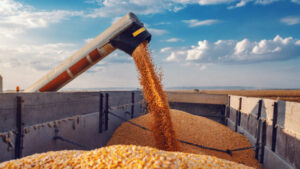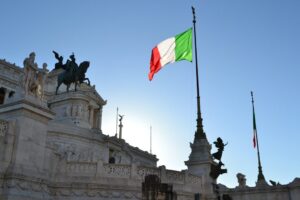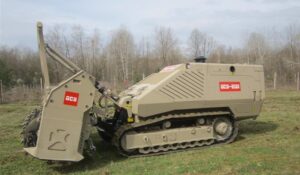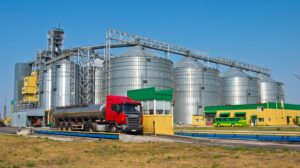
During its operation, the Ukrainian sea corridor has transported 106 million tons of cargo, of which almost 70 million tons is grain, the press service of the Ministry of Communities and Territories Development (MDT) reports.
“These are 4,000 vessels that delivered our agricultural products to the countries of Africa, Asia, and Europe,” said Oleksiy Kuleba, Deputy Prime Minister for Recovery and Minister of Community and Territorial Development.
The Ministry reminded that on March 1, Russia launched a missile attack on the port infrastructure in Odesa. Two civilian port workers were injured in the attack.
The attack damaged two civilian vessels: the SUPER SARKAS, a Sierra Leonean-flagged bulk carrier loaded with more than 21,000 tons of corn and soybeans for export. In addition, the container ship MSC LEVANTE F flying the flag of Panama, owned by a leading European company, was damaged. In total, this is the 29th civilian vessel to be damaged as a result of Russian attacks, the ministry added.

Inflation in Italy, calculated according to national standards, accelerated to 1.7% in annual terms in February from 1.5% a month earlier, according to preliminary data from the Italian statistics agency Istat. The data coincided with the expectations of analysts polled by Trading Economics and pointed to the record pace of consumer price growth since September 2023.
Inflation, calculated according to European Union standards, was 1.7%, the same as in January, while experts had expected an acceleration to 1.8%.
According to the previous report, energy prices jumped by 31.5% this month after rising by 27.5% in January. Transportation services went up by 1.9% after rising by 2.5% a month earlier, and communication services by 0.5% after rising by 1.1%. Overall, services went up by 2.4% (2.6% in January). Food prices increased by 2.2% after rising by 1.7%.
Core inflation, excluding energy and food, remained at 1.8% in February.
http://relocation.com.ua/v-italii-pryskorylasia-infliatsiia/

In 2025, the Swiss-German company Global Clearance Solutions (GCS), one of the world’s leading manufacturers of robotic demining systems, will produce 26 more GCS-200 mechanized demining vehicles for Ukraine in addition to the 62 already operating in different regions of the country, the press service of the Ministry of Defense of Ukraine reports.
“Currently, 62 GCS-200 mechanized demining vehicles are operating in different regions of Ukraine. This year, their fleet is to be replenished with 26 more units,” the Ministry of Defense said in a statement on its website on Monday.
It is reported that the project is funded by international donors, including the governments of Germany, Switzerland, Canada, the United States, the United Kingdom, Lithuania, and through the United24 platform.
It is noted that representatives of the Ministry of Defense, at the invitation of the management of the Ukrainian branch of GCS, visited the production facilities of the company in Germany, which develops and tests GCS demining machines.
“GCS is one of the world’s leading manufacturers of robotic demining systems, whose equipment is used by the Armed Forces of Ukraine, the State Service of Ukraine for Emergency Situations, the State Emergency Service and the National Police. These are reliable, modern systems that have proven their effectiveness in the field. The company provides a full range of services to the Security and Defense Forces, including training and technical support for its vehicles,” said Yevhen Zubarevsky, Head of the Mine Action Organization Department, Deputy Head of the Mine Action Department of the Main Directorate of Mine Action, Civil Protection and Environmental Safety.
The GCS-200 unmanned multi-purpose platform, samples of which were handed over by our partners to a military unit of the Ukrainian Armed Forces Support Command last year, has a number of modifications. As a tracked vehicle, it is very maneuverable and can turn on the spot with a minimum radius of about four meters. The use of mechanized demining machines reduces the risks for the sapper and speeds up the process of land clearance.

Bitcoin and other digital currencies will be included in the US Crypto Strategic Reserve, US President Donald Trump has said.
“I will make the United States the crypto capital of the world,” he wrote on his social network Truth Social on Sunday.
Trump issued an executive order on digital assets, which ordered him to work on the creation of such a reserve. Along with bitcoin, it will include such cryptocurrencies as Ethereum, XRP, Solana, and Cardano.
In this case, bitcoin and ether will become the “heart of the reserve”.
Bitcoin fell by 2.1% to $92,358 thousand by 10:03 a.m. on Monday, according to Coindesk. After Trump’s statements the day before, the world’s most popular cryptocurrency rose in price by more than 10%. Over the past year, its value has jumped by 36.4%.

“Kernel, one of Ukraine’s largest agricultural holdings, posted a net profit of $56 million in the second quarter of fiscal year (FY) 2025 (July-September 2024), compared to $133 million in the same period of FY 2024.
According to the quarterly report published on the company’s website on Friday, Kernel’s consolidated revenue in the second quarter of FY2025 reached $1149 million, up 10% year-on-year amid a low comparative base due to the lack of stable grain export operations in July-September 2023.
“This growth was primarily driven by an increase in edible oil sales, which was driven by both higher export volumes and higher global prices,” the company said.
At the same time, the Group recognized a net loss from changes in the fair value of biological assets in the amount of $33 million compared to a loss of $12 million recognized in Q1 FY2024, the report also specifies.
It is also noted that the Group’s cost of goods sold increased by 18% to $960 million, mainly due to a 45% increase in the cost of goods sold and raw materials used, reflecting increased competition for raw materials and limited supplies. On the other hand, transportation and procurement costs decreased by 52% year-on-year, accounting for only 10% of total cost of sales, due to lower freight rates supported by stable export operations from the Black Sea region.
As a result of the sharp increase in cost of sales, which outpaced revenue growth, gross profit in the second quarter of FY2025 decreased by 28% year-on-year and by 5% quarter-on-quarter to $157 million.
Other operating income for the three months ended December 31, 2024 amounted to $10 million, down 55% year-on-year, mainly reflecting gains from the settlement of contract price differences, inventory inventory, and fines and claims accrued on oil and grain trading operations.
It is noted that general and administrative expenses in the second quarter of FY2025 increased sharply by 42% year-on-year, reaching $75 million. This surge was mainly due to an increase in salaries and related expenses, as well as an increase in legal and professional services.
As a result, Kernel’s EBITDA in the second quarter of FY2025 amounted to $118 million, down 42% quarter-on-quarter and 30% quarter-on-quarter in FY2024.
Overall, in the first half of FY2025, the company’s net profit increased by 73% to $77 million, EBITDA by 29% to $287 million, and revenue by 22% to $1 billion 947 million.
Kernel is the world’s largest exporter of sunflower oil and one of the largest producers and sellers of bottled oil in Ukraine. It is also engaged in the cultivation and sale of agricultural products.
In FY2024, Kernel’s net profit decreased by 44% compared to FY2023 to $167.95 million, while revenue increased by 4% to $3.581 billion and EBITDA decreased by 30% to $381 million.

“Best Picture – “Anora”
“Best Actress – Mikey Madison (Anora)
“Best Actor – Adrian Brody (The Brutalist)
“Best Supporting Actor – Kieran Culkin (True Grit)
“Best Supporting Actress – Zoe Saldana (Emilia Perez)
“Best Adapted Screenplay – Peter Strahan (The Conclave)
“Best Original Screenplay – Sean Baker (Anora)
“Best Foreign Language Film – I’m Still Here (Brazil)
“Best Animated Film – “The Stream” (a wonderful animated film, highly recommended!)